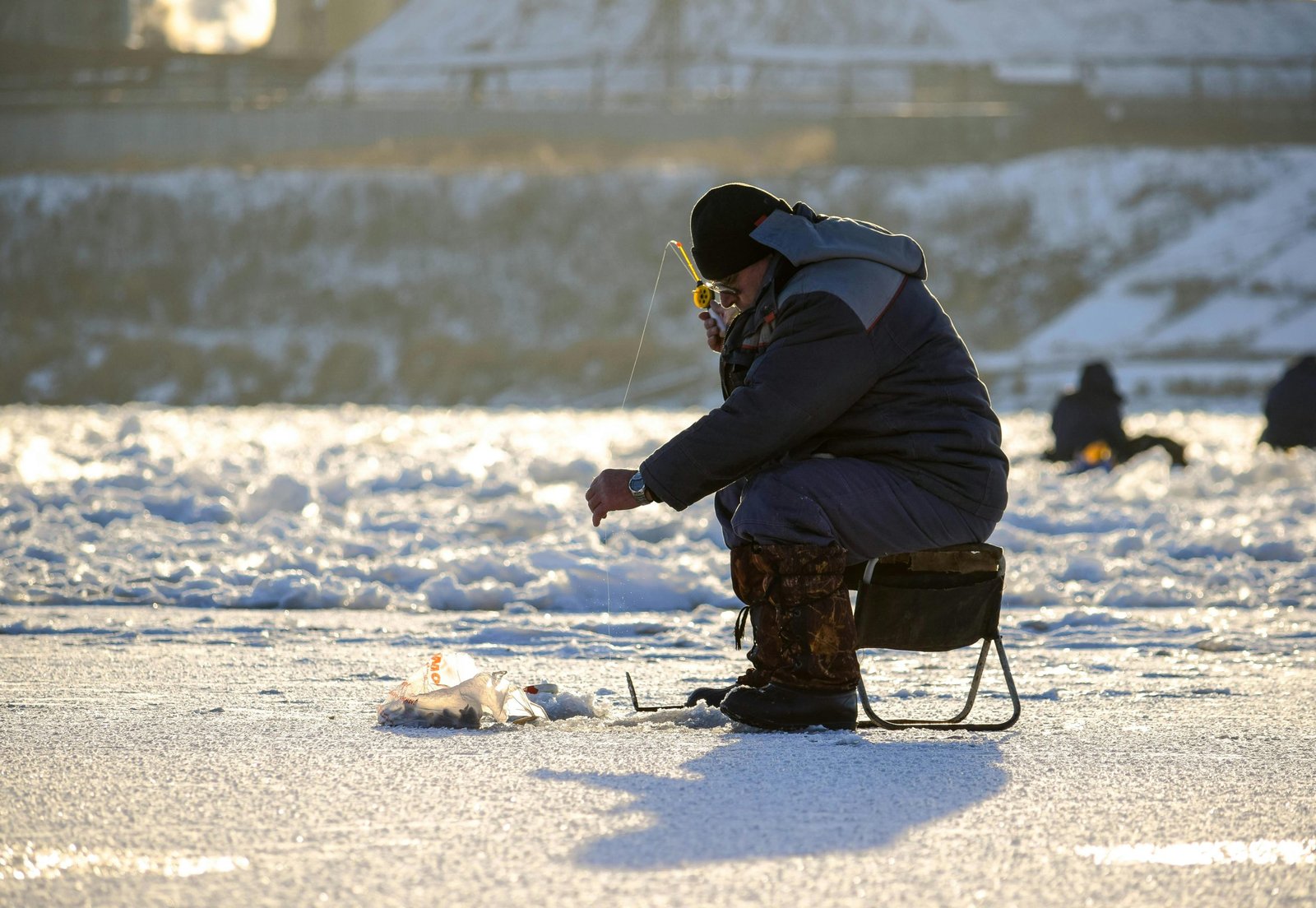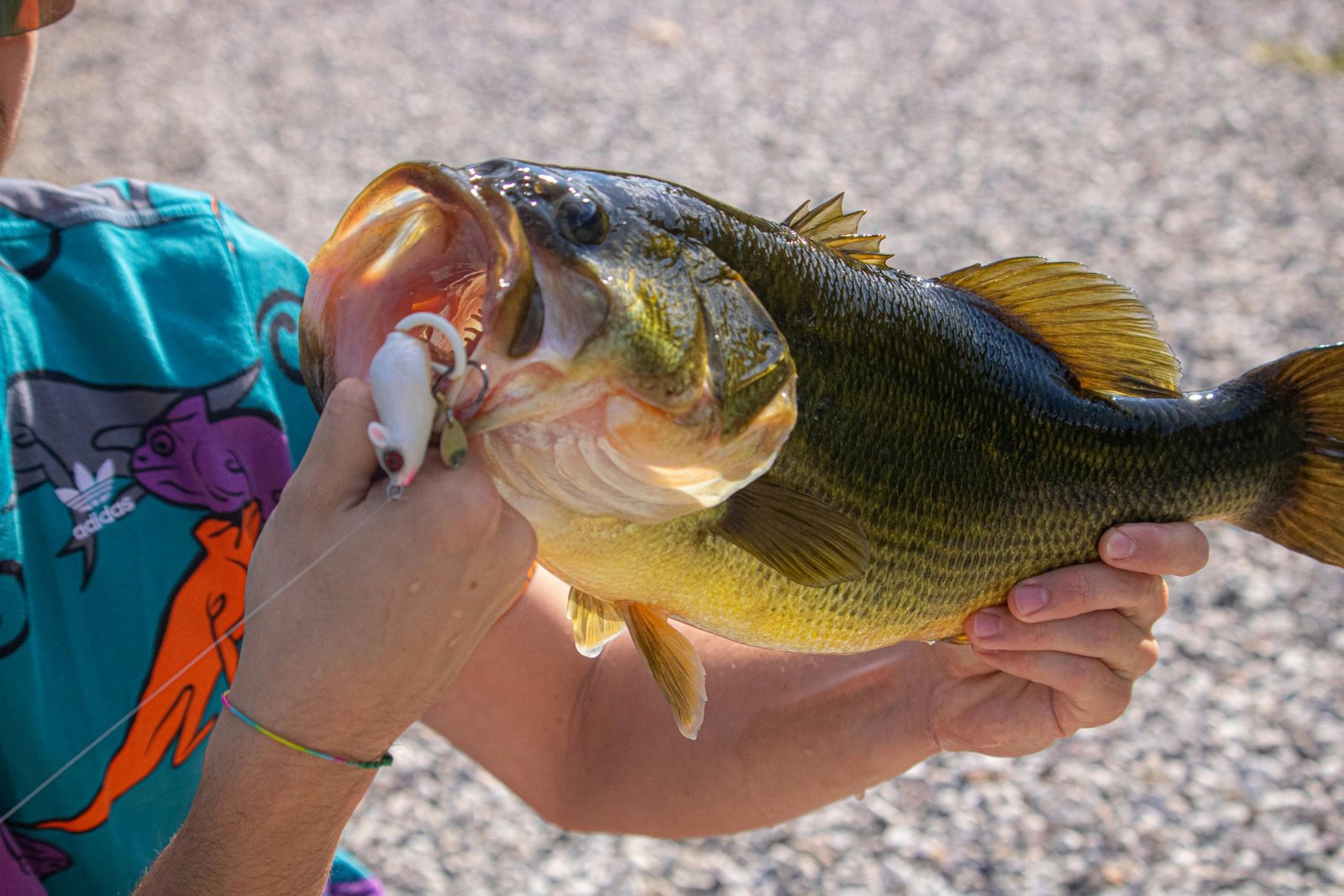
Winter bass fishing can be a challenging yet rewarding experience.
The colder water temperatures can make the bass less active and more difficult to catch.
But the good news is, with the right lure and technique, you can still have some nice catches!
In this article, I will share some of the best lures for winter bass fishing based on my personal experience and research.
One of the most effective baits for winter bass fishing is the jig. A slow-moving jig can mimic a crawfish or other bottom-dwelling prey, which is a favorite food source for bass during the winter.
Another great option is a blade bait, which can be fished vertically and mimics a dying baitfish.
Jerkbaits are also a popular choice, as their erratic movements can trigger a reaction bite even from the most lethargic bass.
But before you talk about types of lures, I want to make one thing clear. The bigger the lures, the more chances you catch something.
Bass won’t waste limited energy chasing little minnows, they want the big prey.
Another thing to keep in mind is that the key to successful winter bass fishing is to fish slowly and methodically.
The bass are not as active during this time of year, so you need to give them time to bite.
So big lures + slow retrieve = winter bass caught. Got it?
If you did, let’s get into some other details.
Winter Bass Behavior

Water Temperature
Water temperature plays a crucial role in the behavior of bass during winter. As the water temperature drops, the metabolism of bass slows down, and they become less active.
Therefore, it is essential to understand the water temperature in the area you are fishing. Bass tend to move to deeper water where the temperature is more stable. In general, the ideal temperature range for bass fishing during winter is between 40°F and 50°F.
Bass Movement in Cold Water
Bass movement in cold water is different from their movement in warmer water. They tend to move slower and conserve energy.
As mentioned above, it is essential to slow down your bait presentation and use baits that mimic the movement of slow-moving prey.
Essential Winter Bass Lures
In my tackle box, there are three types of lures that are always there for winter bass fishing: jigging spoons, jerkbaits, and soft plastics.
Jigging Spoons and Their Technique
Jigging spoons are one of the most effective baits for winter bass fishing. These baits are designed to mimic a dying baitfish and can be fished at any depth you wish.
The key to using jigging spoons is to fish them with a slow, steady retrieve with occasional pauses. This technique allows the spoon to flutter and flash, making it irresistible to bass.
The Role of Jerkbaits
Jerkbaits are another great option for winter bass fishing.
The key to using jerkbaits is to fish them with a series of sharp jerks followed by pauses. This technique causes the bait to dart and pause, making it look like an easy meal for bass.
Soft Plastics for Finesse Fishing
Finally, soft plastics are probably the best for finesse fishing in the winter. You can fish them on a jighead or Texas-rig and they’ll catch fish in no time.
As for any lure in winter, the key to using soft plastics is to fish them slowly and with subtle movements. This technique allows the bait to look natural and can entice even the most finicky bass.
The Art of Slow Retrieves

If you go on the lake and aggressively cast and retrieve, you’re going to go home empty handed.
You need to slow down and patiently wait for the bass to bite.
Here are two tips that have proved useful for me:
Crankbaits in Cold Water
))/3836424.json)
Crankbaits are a great option for slow retrieves in cold water. I prefer using lipless crankbaits in the winter as they have a more subtle action and can be retrieved at a slower speed.
Use a low visibility line, preferably fluorocarbon, to minimize the times bass get spooked by line.
To achieve a slow retrieve, I recommend reeling in the crankbait at a steady pace and occasionally pausing to let it sink to the bottom. This technique can be especially effective when fishing around drop-offs and deeper structures where bass tend to hide in the winter.
Spinnerbait Techniques
))/2235440.json)
Spinnerbaits can also be effective for slow retrieves in the winter. To achieve a slow retrieve with a spinnerbait, I recommend using a lighter weight and retrieving it at a slower pace.
This technique can be especially effective when fishing around shallow cover where bass tend to be more active in the winter.
When fishing with spinnerbaits, I recommend using a slow-rolling technique where the bait is retrieved at a steady pace with occasional pauses. The vibrations and flash spinners create are really useful when you struggle to entice bass with other lures.
Tactical Jig Fishing
))/1636554.json)
When it comes to winter bass fishing, jigs are my go-to bait.
They are versatile, and you can use them in a variety of ways to entice bass to bite. In this section, I’ll cover two types of jigs that I find particularly effective for winter bass fishing: football jigs for bottom bouncing and hair jigs for finesse.
Football Jigs for Bottom Bouncing
Football jigs are perfect for bottom bouncing, which is when you drag the jig along the bottom of the lake or river. The football-shaped head of the jig allows it to bounce off rocks and other obstacles, mimicking the natural movement of prey.
When selecting a football jig, I prefer a heavier weight, such as 1/2 to 3/4 ounces, to ensure it stays on the bottom. I also like to use a natural color, such as brown or green, to match the color of the bottom.
Hair Jigs
Hair jigs are another great option for winter bass fishing, especially when bass are less active and more finicky. These jigs are typically smaller and lighter than football jigs and are designed to mimic smaller prey, such as crawfish.
When selecting a hair jig, I prefer a lighter weight, such as 1/8 to 1/4 ounces, to allow for a more finesse presentation. I also like to use a natural color, such as brown or green, to match the color of the bottom or the natural prey in the area.
Location Strategies

Location is key. I’ve found that targeting points and structures can be especially effective.
Points are areas where the water juts out into the lake, creating a natural funnel for bass to swim through. Structures, such as fallen trees or brush piles, provide cover for bass to hide in and ambush prey.
Targeting Points and Structures
When targeting points, I like to use a slow and steady retrieve with a jig or a drop shot rig. This allows me to keep the bait in the strike zone for a longer period of time. When fishing structures, I prefer to use a Texas rigged soft plastic worm or creature bait.
I’ll cast the bait past the structure and slowly drag it back towards me, making sure to bump the bait against the structure to create a reaction strike.
Fishing Around Bridges and Rocks
Another effective location for winter bass fishing is around bridges and rocks. Bridges provide shade and cover for bass, while rocks provide structure and ambush points.
When fishing around bridges, I like to use a spinnerbait or a crankbait. The vibration and flash of the spinnerbait can trigger a reaction strike, while the crankbait can imitate a fleeing baitfish.
When fishing around rocks, I prefer to use a jig or a drop shot rig. I’ll cast the bait past the rocks and slowly drag it back towards me.
Frequently Asked Questions
What are the most effective lures for targeting bass during winter months?
When targeting bass during the winter months, it’s important to choose lures that can be fished slowly and have a natural presentation. Some of the most effective lures for winter bass fishing include jigs, jerkbaits, blade baits, and slow-rolling spinnerbaits. These lures can be fished at a slow and steady pace, which is ideal for the cooler water temperatures.
How does bait selection for smallmouth bass change in colder weather?
Smallmouth bass tend to be more active in colder water temperatures than largemouth bass, but they still require a slower presentation during the winter months. Some effective baits for smallmouth bass in colder weather include hair jigs, tube jigs, and blade baits. These baits can be fished slowly and close to the bottom, which is where smallmouth bass tend to hang out during the winter.
What live baits work best for bass fishing in the winter?
Live baits can be effective for winter bass fishing, but it’s important to choose baits that can be fished slowly. Some effective live baits for winter bass fishing include minnows, shad, and nightcrawlers. These baits can be fished on a jighead or Carolina rig and can be presented slowly and close to the bottom.
Can you recommend top lure colors for bass in low winter temperatures?
When fishing for bass in low winter temperatures, it’s important to choose lure colors that mimic the natural forage in the water. Some effective colors for winter bass fishing include natural colors like brown, green, and black, as well as brighter colors like chartreuse and orange. It’s also important to consider the clarity of the water when choosing lure colors.
What strategies should be employed for bass fishing in Florida’s winter conditions?
Florida’s winter conditions can be challenging for bass fishing, but there are some effective strategies that can be employed. One strategy is to fish in deeper water, where the water temperatures are more stable. Another strategy is to fish with slower presentations and natural baits like shiners and crawfish.
Are blade baits a good choice for winter bass fishing, and if so, how should they be used?
Blade baits can be a great choice for winter bass fishing, especially in colder water temperatures. These lures can be fished slowly and close to the bottom, which is where bass tend to hang out during the winter months. Blade baits can be fished with a steady retrieve or with a lift-and-fall retrieve to imitate a dying baitfish.




